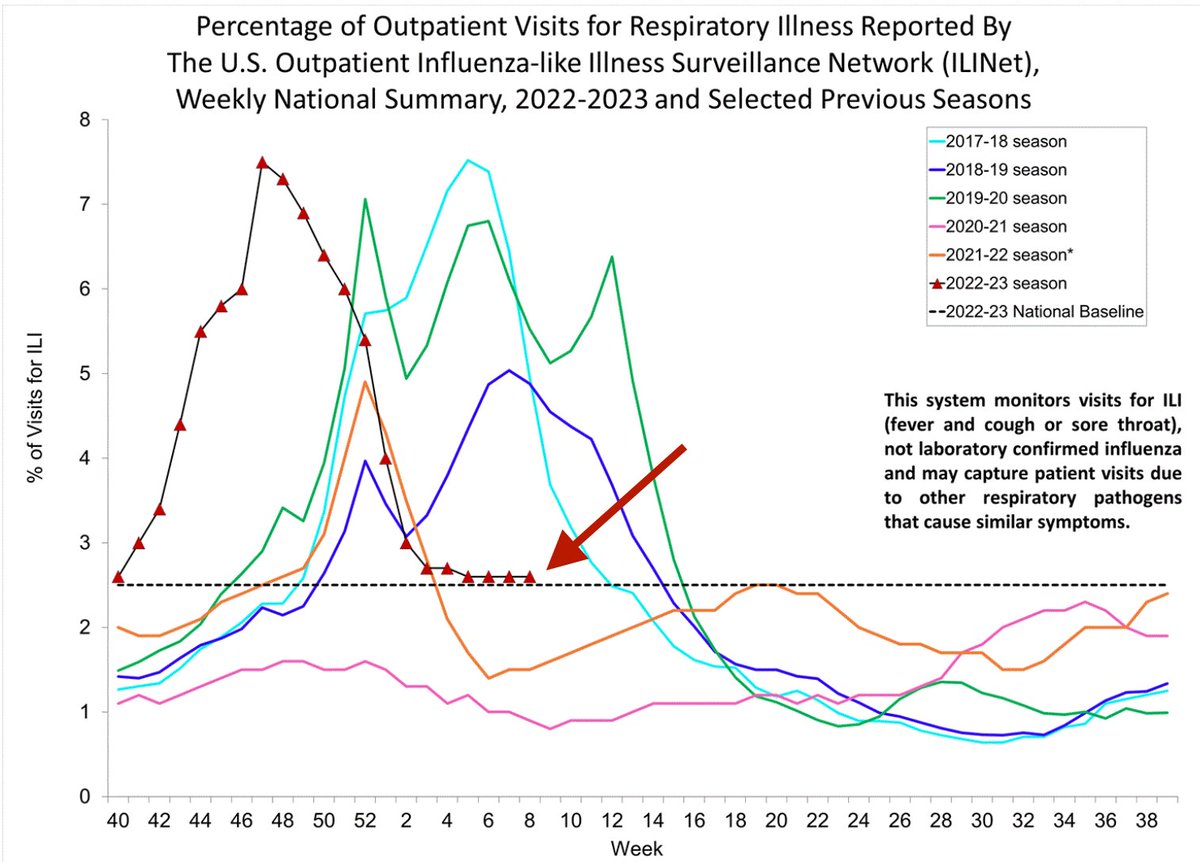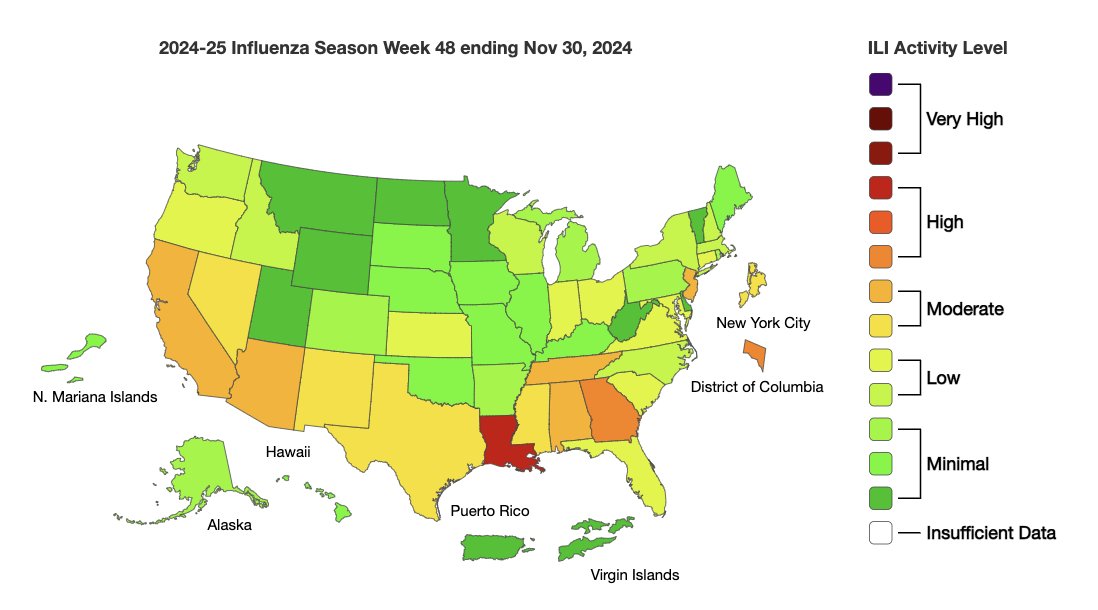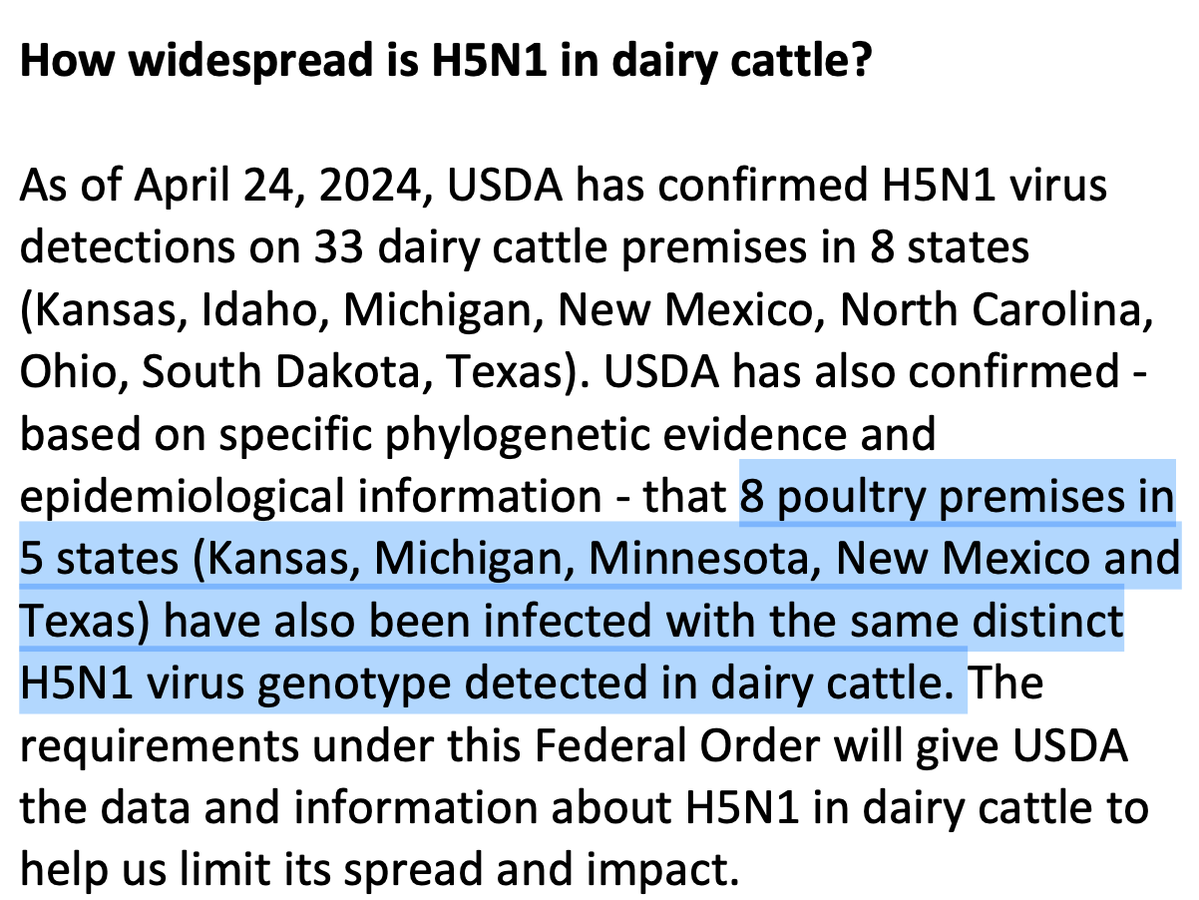1. #Flu activity has dropped off dramatically since its peak around Thanksgiving, but this odd early season still can't seem to bring itself to an end. For the 6th week in a row it is hovering just above the epidemic threshold.
A 🧵
A 🧵

2. That said, rhinoviruses & human coronaviruses are causing more #influenza-like illness right now than #flu is, according to the Biofire syndromic trends. syndromictrends.com 

3. @CDCgov has been informed of 2 more pediatric #flu deaths; both kids died in early December. So far this season there have been 117 confirmed flu deaths in children. This graph (mine, with data from CDC) gives you a picture of how this year compares to others re: kids. 

4. The burden of illness from this #flu season is on the mildish side. @CDCgov estimates 26M illnesses, 290K hospitalizations & 18K deaths. In terms of severe illness & deaths, many years have been worse.
A lot of flu doesn't necessarily = severe season.
cdc.gov/flu/about/burd…
A lot of flu doesn't necessarily = severe season.
cdc.gov/flu/about/burd…

5. Very few places in the country are still reporting #flu activity, as you can see on the map on the left. On the right is the same week in the 2017-18 flu season, which was a very bad year. Flu season has wound down very early in 2022-23. 



6. One last thing: Still no sign of a surge in #influenza B cases. Doesn't mean there won't be some later; we'll know when we know. There's been remarkably little #flu B this year. It's made up about 1% of all cases where viruses were subtyped. cdc.gov/flu/weekly/
• • •
Missing some Tweet in this thread? You can try to
force a refresh



















